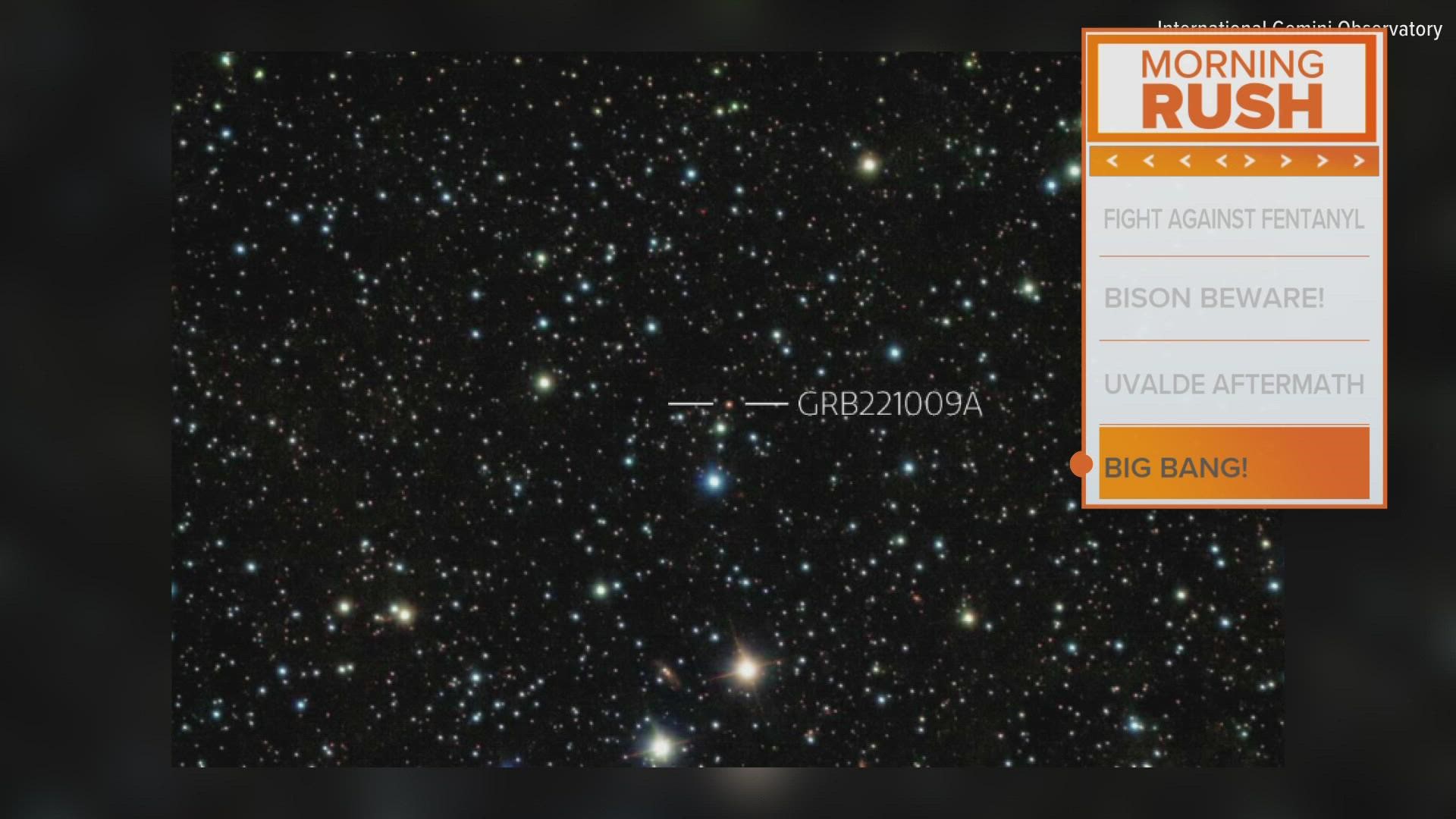MARYLAND, USA — Talk about a big bang: NASA scientists recently captured pictures of what they believe may be the brightest, and possibly largest, explosion ever recorded.
Astronomers believe that the explosion was much more than just a burst of energy, they were witnessing the creation of a new black hole. They believe that a massive, dying star collapsed into itself, creating the black hole and throwing gamma radiation far into space in an enormous supernova.
Astronomers say that on Oct. 9, a wave of radiation swept over the Earth. They say that the radiation was caused by a gamma-ray burst, the most powerful type of explosion in the universe, billions of light years away.
As soon as NASA detected the gamma rays, telescopes around the world turned towards the site to capture whatever data they could.
Among these telescopes were NASA's Fermi Gamma-ray Space Telescope, Neil Gehrels Swift Observatory, and the Wind spacecraft.
Scientists believe that the explosion, which has been dubbed GRB 221009A, originated somewhere in the direction of the Sagitta constellation, and estimate that the energy had traveled around 1.9 billion years to reach Earth.
The stunning aftermath of the explosion was captured in photographs by the Swift Observatory, showing rings of X-ray radiation spreading out from the luminous center of the explosion.
Not only was this gamma-ray burst a sight to behold, it also served as a test of NASA's Orbiting High-energy Monitor Alert Network, which is part of an experiment to help NASA's NICER X-ray telescope respond to energy bursts like this one.
“OHMAN provided an automated alert that enabled NICER to follow up within three hours, as soon as the source became visible to the telescope,” said Zaven Arzoumanian, the NICER science lead at Goddard. “Future opportunities could result in response times of a few minutes."
The explosion can also reportedly teach scientists much more about deep space, from stellar collapse to the creation of black holes to the conditions of distant galaxies.
The Fermi Telescope reportedly detected the energy burst for over 10 hours. Scientists say that the reason the blast was so vibrant is because, relatively speaking, it is very close to our solar system.
“This burst is much closer than typical GRBs, which is exciting because it allows us to detect many details that otherwise would be too faint to see,” said Roberta Pillera, a Fermi LAT Collaboration member who led initial communications about the burst and a doctoral student at the Polytechnic University of Bari, Italy. “But it’s also among the most energetic and luminous bursts ever seen regardless of distance, making it doubly exciting."
"It's the equivalent of getting front row seats at a fireworks show," said Yvette Cendes, an astronomer and postdoctoral fellow at the Harvard-Smithsonian Center for Astrophysics .
Another gamma-ray burst like this one may not be seen for decades, says NASA.

